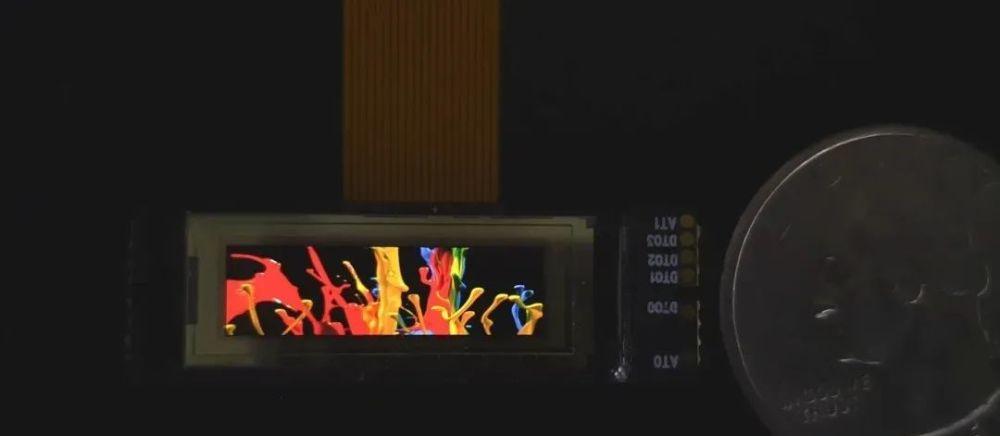According to techxplore, a South Korean research team has developed a material technology that achieves high resolution without high temperatures. Moreover, it has successfully commercialized the actual product by applying the technology to OLED displays.
Recently, the Korea Electronics and Communications Research Institute (ETRI) announced that it has developed a material technology that can make pixel sizes up to 3 μm even at manufacturing temperatures below 100 °C, and the successful application of OLED microdisplay products will be exhibited in South Korea for the first time.

OLED micro display panel with photoresist material. Image source: Institute of Electronics and Telecommunications (ETRI)
Displays are produced by forming fine pixels on a thin film called photoresists, whose chemical properties change when exposed to light. Until now, photoresist materials have been processed at high temperatures. However, for OLEDs that are emerging as next-generation displays, there may be problems with LEDs that emit light at high temperatures. Developing material technology that can be processed even at low temperatures is key.
ETRI applied the developed photoresist material to OLED for the first time in Korea. The research team made a prototype of a 0.7-inch micro display suitable for wearables. Each pixel is no larger than 3 μm in size and 2300 pixels per inch is dense, making it possible to produce ultra-high resolution panels.
The research team has been conducting AR implementation research related to OLED micro-displays since 2016, which can serve as a platform for making this prototype. In addition, ETRI evaluates the performance of developed materials and supports participation in world-class academic conferences and exhibitions.
Once the validation was completed, it has successfully supplied development materials exclusively to Korean companies. In particular, the material was applied to the mobile OLED display panel of the smartphone released by the company this year, becoming the world's first commercial case. As a result, an economic ripple effect of more than 60 billion won (about 324 million yuan) is expected in 2021 alone, which can be evaluated as the realization of practical material localization and self-reliance.
Dr Nam Sung Cho said: "Together with governments, companies and national research institutes, we have successfully localized raw materials through national projects. We hope that this achievement will help Korea maintain its leading position in the display industry and the independence of materials, parts and equipment. ”
ETRI is planning follow-up research to develop a higher-resolution panel that can hold 3,000 pixels in 1 inch, and will continue discussions on transferring the microdisplay technology developed to related companies.
Source: techxplore MicroLEDDisplay
Note: The information in this article is only for sharing and communication channels, and does not represent the views of this public account
Recommended reports